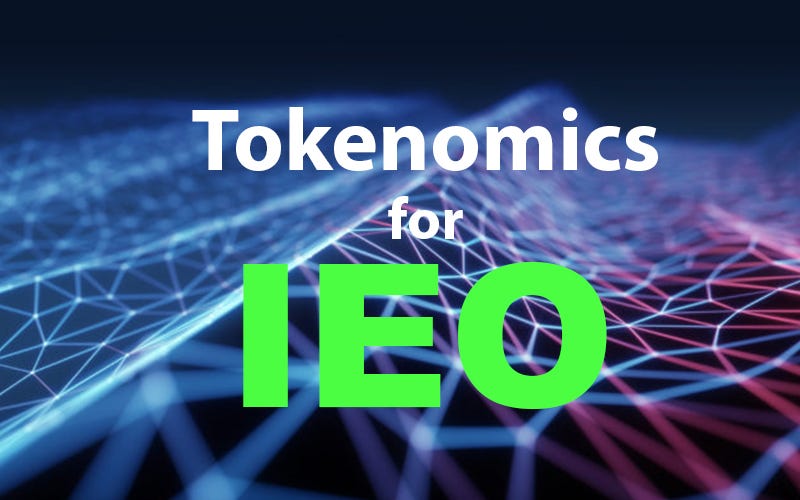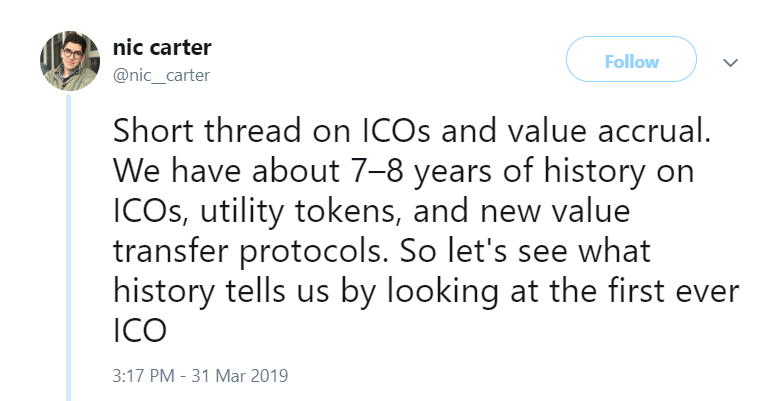Latest news about Bitcoin and all cryptocurrencies. Your daily crypto news habit.
 Initial Exchange Offering: How to nail token ecenomics for IEOs
Initial Exchange Offering: How to nail token ecenomics for IEOsPlease take a look at previous article — Ultimate list of IEO Platforms/Launchpads: TOP 15+ Exchanges
The typical cryptocurrency investor of 2019 is much savvier and more sophisticated than they were back in 2017. As the new trend of Initial Exchange Offerings (IEOs) has caught on, cryptocurrency exchanges are catering to these more sophisticated investors by choosing the projects that they’ll support with an IEO very carefully.
In this article, we discussed all of the important features that cryptocurrency exchanges are looking for in a project that they will help with crowdfunding through their IEO platforms. In this article, we’re going to hone in on the feature that is perhaps the most critical of them all: token economics.
Specifically, we’re going to explain why token economics are so important to nail down in the initial phase of project planning and then we’ll look at some example cases of both successful and unsuccessful token economics from existing projects in the cryptocurrency industry.
Solid Token Economics are a Prerequisite to Launching an IEO
Now that global regulators have begun cracking down on the sorts of scam ICOs that were common a couple of years ago, the decentralized crowdfunding market has evolved into two separate categories: Security Token Offerings (STOs) and IEOs/ICOs.
IEOs and ICOs are now exclusively for utility tokens, as any token that could be considered a security must opt for an STO model to remain legally compliant. The problem is, most utility tokens are failing.
The biggest misconception about utility tokens in their short history has been that increasing use will always lead to increasing token value. In other words, investors believed that they would profit simply by being the earliest members of an ecosystem that would become increasingly popular over time.
Instead, what we’ve learned is that token economics for utility tokens aren’t actually different from traditional economics. For a utility token to increase in value, there needs to be a mechanism for increasing the relative demand for the token compared to its supply.
With that being said, there are utility token success stories out there. By avoiding the mistakes of unsuccessful projects and following the examples of the winners, your token economics will stand out from the crowd and drastically increase your chances of getting an IEO.
Example Cases: Good and Bad Token Economics
We need not look further than the first ever ICO and utility token to find an example of how poor token economics can doom a project that’s otherwise promising. This was explained in an enlightening thread by Nic Carter on Twitter.
 (Source: https://twitter.com/nic__carter/status/1112479150147862528)
(Source: https://twitter.com/nic__carter/status/1112479150147862528)
Omni, originally called Mastercoin, has demonstrated some significant utility over the years. As Carter explains, the Omni protocol has been used to process $144B in on-chain transaction for Tether (USDT) alone since its inception.
Despite this noteworthy utility, the OMNI token itself has never built any intrinsic value. The Omni team failed to develop a mechanism to extract value from their protocol’s utilization, and the token became essentially useless as a result.
On the other hand, there is one utility token that has outperformed all the hype and expectations: BNB. In addition to their market-leading cryptocurrency exchange, Binance has built a token economic model that other utility tokens would be foolish to ignore.
We can break down BNB’s token economics into 3 core components.
- Actual utility: Binance users who pay fees with BNB receive discounts, giving the BNB unique utility within the Binance ecosystem.
- Deflationary mechanism: Every quarter, Binance uses 20% of their profits to buy BNB tokens on the open market and burn them. This decreases token supply, increasing relative demand for the tokens that remain.
- Incentive to hold: One potential problem with utility tokens is that investors have no reason to hold them other than to speculate on future value. Binance has addressed this problem with a tiered discount structure that gives the biggest discounts to the users who are holding the largest sums of BNB.
Binance has shown that utility tokens can make strong value propositions if their token economics are well designed and they succeed in solving a need of the market.
Design Questions
This brings us to our final guidelines for designing utility token economics that will not only attract IEO platforms and investors, but also keep them around for the years that follow. We’ll present these as questions.
Question 1: Does your token offer utility beyond just access to your product or platform? Examples include discounts, governance rights, and/or access to extra features.
Question 2: Does your token economic model include a mechanism to increase the relative demand for the token compared to its supply, such as a burn program?
Question 3: Do investors have a reason to hold your token? This could be payouts as in a proof-of-stake system, tiered product discounts such as with BNB, or something creative for your particular token ecosystem.
It’s certainly no easy task to develop solutions that satisfy these challenges, but token economics are simply too important to overlook.
Most importantly, you don’t need to go through this process alone.
We work directly with projects to develop strong economic models, aided by instant feedback from the key exchanges we work with.
The days of raising millions of dollars with only a promising product have passed. But for those projects that find a way to pass the success of their products onto investors, the future has never been brighter.
Please PM me in telegram @amidatonga if you need help with your IEO.
IEO plural: How to Nail Token Economics for IEOs was originally published in Hacker Noon on Medium, where people are continuing the conversation by highlighting and responding to this story.
Disclaimer
The views and opinions expressed in this article are solely those of the authors and do not reflect the views of Bitcoin Insider. Every investment and trading move involves risk - this is especially true for cryptocurrencies given their volatility. We strongly advise our readers to conduct their own research when making a decision.